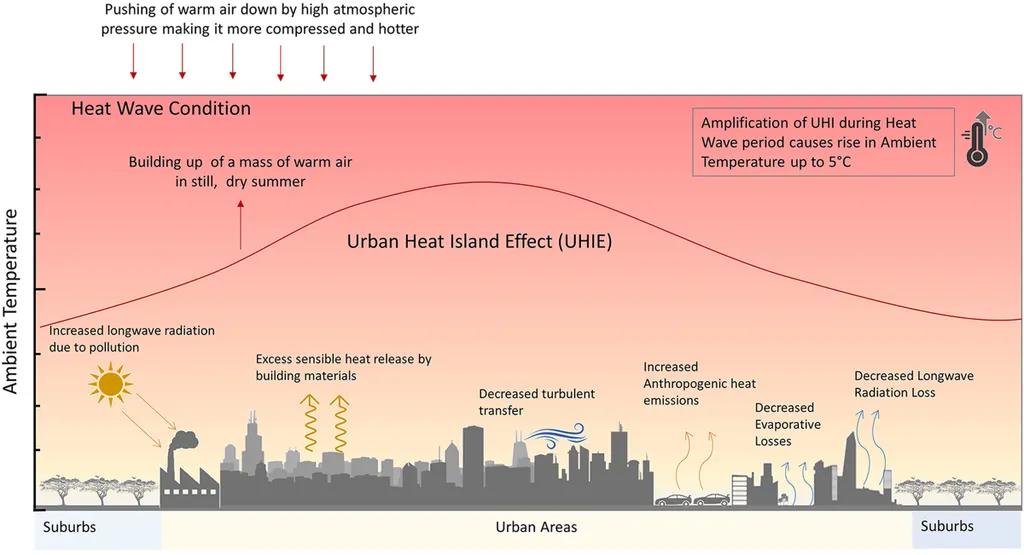In a world where cities are expanding at an unprecedented rate, a new study sheds light on the intricate relationship between urbanization and rising land surface temperatures, offering crucial insights for sustainable urban planning and the energy sector. Led by Ali Mohamed from the College of Arts and Sciences at Qatar University, the research published in the journal *Current Research in Environmental Sustainability* (translated to English as “Current Research in Environmental Sustainability”) delves into how land use and land cover changes driven by urbanization are intensifying the urban heat island (UHI) effect across diverse climatic zones.
The study, which reviewed over 73 peer-reviewed articles published between 2004 and 2024, reveals that India, China, and the United States are the most frequently studied countries in this domain. The research highlights a significant increase in studies post-2015, coinciding with advancements in satellite platforms and analytical tools. “The data shows a clear trend: as cities grow, so do their temperatures,” Mohamed explains. “This is particularly evident in semi-arid, arid, and tropical zones, where vegetation loss and the expansion of impervious surfaces are major contributors to rising land surface temperatures.”
The findings underscore the critical role of satellite data selection in monitoring urban heat, with Landsat imagery being the most commonly used tool, except in polar regions, where MODIS data prevails. This regional variability emphasizes the need for context-specific approaches to mitigate urban heat effectively.
For the energy sector, the implications are substantial. As cities become hotter, the demand for cooling energy surges, leading to increased electricity consumption and higher emissions. “Understanding these patterns is crucial for energy providers and urban planners,” Mohamed notes. “By integrating mitigation strategies like urban greening, water bodies, high albedo materials, and optimized urban geometry, cities can reduce land surface temperatures and alleviate the strain on energy resources.”
The study’s insights point towards a future where sustainable urban planning is not just an environmental imperative but also an economic necessity. By adopting these strategies, cities can enhance energy efficiency, reduce costs, and contribute to global efforts to combat climate change. As Mohamed concludes, “This research provides a roadmap for sustainable urban development, offering practical solutions that can be tailored to the unique challenges of different climatic zones.”
In an era where urbanization and climate change are inextricably linked, this study serves as a timely reminder of the power of data-driven decision-making. By leveraging satellite technology and regional analyses, cities can pave the way for a cooler, more sustainable future.

